1. In Patagonia by Bruce Chatwin
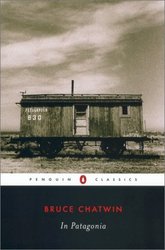
An exhilarating look at a place that still retains the exotic mystery of a far-off, unseen land, Bruce Chatwin’s exquisite account of his journey through Patagonia teems with evocative descriptions, remarkable bits of history, and unforgettable anecdotes. Fueled by an unmistakable lust for life and adventure and a singular gift for storytelling, Chatwin treks through “the uttermost part of the earth”— that stretch of land at the southern tip of South America, where bandits were once made welcome—in search of almost forgotten legends, the descendants of Welsh immigrants, and the log cabin built by Butch Cassidy. An instant classic upon publication in 1977, In Patagonia is a masterpiece that has cast a long shadow upon the literary world.
2. The Worst Journey in the World by Apsley Cherry-Garrard
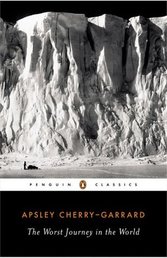
The Worst Journey in the World recounts Robert Falcon Scott’s ill-fated expedition to the South Pole. Apsley Cherry-Garrard—the youngest member of Scott’s team and one of three men to make and survive the notorious Winter Journey—draws on his firsthand experiences as well as the diaries of his compatriots to create a stirring and detailed account of Scott’s legendary expedition. Cherry himself would be among the search party that discovered the corpses of Scott and his men, who had long since perished from starvation and brutal cold. It is through Cherry’s insightful narrative and keen descriptions that Scott and the other members of the expedition are fully memorialized.
3. The Road to Oxiana by Robert Byron
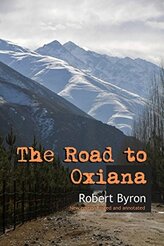
The Road to Oxiana is an account of Robert Byron’s ten-month journey to Iran and Afghanistan in 1933–34 in the company of Christopher Sykes. This travelogue is considered by many modern travel writers to be the first example of great travel writing. Bruce Chatwin has described it as “a sacred text, beyond criticism” and carried his copy since he was fifteen years old, “spineless and floodstained” after four journeys through central Asia.
4. The Way of the World by Nicolas Bouvier
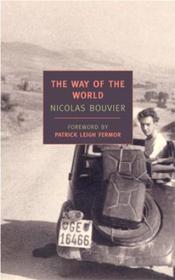
In 1953, twenty-four-year old Nicolas Bouvier and his artist friend Thierry Vernet set out to make their way overland from their native Geneva to the Khyber Pass. They had a rattletrap Fiat and a little money, but above all they were equipped with the certainty that by hook or by crook they would reach their destination, and that there would be unanticipated adventures, curious companionship, and sudden illumination along the way. The Way of the World, which Bouvier fashioned over the course of many years from his journals, is an entrancing story of adventure, an extraordinary work of art, and a voyage of self-discovery on the order of Robert M. Pirsig’s Zen and the Art of Motorcycle Maintenance. As Bouvier writes, “You think you are making a trip, but soon it is making—or unmaking—you.”
5. A Short Walk in the Hindu Kush by Eric Newby
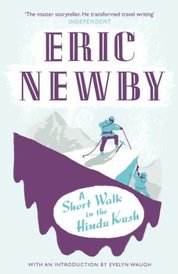
For more than a decade following the end of World War II, Eric Newby toiled away in the British fashion industry, peddling some of the ugliest clothes on the planet. Fortunately, Newby reached the end his haute-couture tether in 1956. At that point, with the sort of sublime impulsiveness that's forbidden to fictional characters but endemic to real ones, he decided to visit a remote corner of Afghanistan, where no Englishman had planted his brogans for at least 50 years. What's more, he recorded his adventure in a classic narrative, A Short Walk in the Hindu Kush. The title, of course, is a fine example of Newby's habitual self-effacement, since his journey--which included a near-ascent of the 19,800-foot Mir Samir--was anything but short. And his book seems to furnish a missing link between the great Britannic wanderers of the Victorian era and such contemporary jungle nuts as Redmond O'Hanlon.
6. Arabian Sands by Wilfred Thesiger
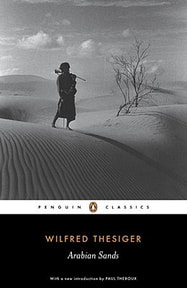
In the spirit of T.E. Lawrence, Wilfred Thesiger spent five years wandering the deserts of Arabia, producing Arabian Sands, 'a memorial to a vanished past, a tribute to a once magnificent people'. Wilfred Thesiger, repulsed by what he saw as the softness and rigidity of Western life - 'the machines, the calling cards, the meticulously aligned streets' - spent years exploring in and around the vast, waterless desert that is the 'Empty Quarter' of Arabia. Travelling amongst the Bedu people, he experienced their everyday challenges of hunger and thirst, the trials of long marches beneath the relentless sun, the bitterly cold nights and the constant danger of death if it was discovered he was a Christian 'infidel'. He was the first European to visit most of the region, and just before he left the area the process that would change it forever had begun - the discovery of oil.
7. Venice by Jan Morris
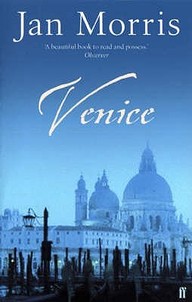
Often hailed as one of the best travel books ever written, Venice is neither a guide nor a history book, but a beautifully written immersion in Venetian life and character, set against the background of the city's past. Analysing the particular temperament of Venetians, as well as its waterways, its architecture, its bridges, its tourists, its curiosities, its smells, sounds, lights and colours, there is scarcely a corner of Venice that Jan Morris has not investigated and brought vividly to life. Jan Morris first visited the city of Venice as young James Morris, during World War II. As she writes in the introduction, 'it is Venice seen through a particular pair of eyes at a particular moment - young eyes at that, responsive above all to the stimuli of youth.' amzn.to/2hga4GSVenice is an impassioned work on this magnificent but often maddening city.
8. The Great Railway Bazaar by Paul Theroux

First published more than thirty years ago, Paul Theroux's strange, unique, and hugely entertaining railway odyssey has become a modern classic of travel literature. Here Theroux recounts his early adventures on an unusual grand continental tour. Asia's fabled trains -- the Orient Express, the Khyber Pass Local, the Frontier Mail, the Golden Arrow to Kuala Lumpur, the Mandalay Express, the Trans-Siberian Express -- are the stars of a journey that takes him on a loop eastbound from London's Victoria Station to Tokyo Central, then back from Japan on the Trans-Siberian. Brimming with Theroux's signature humor and wry observations, this engrossing chronicle is essential reading for both the ardent adventurer and the armchair traveler.
9. The Innocents Abroad by Mark Twain
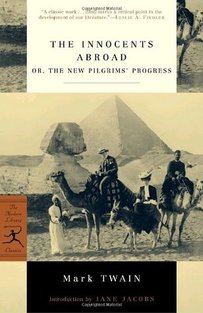
The Innocents Abroad is one of the most prominent and influential travel books ever written about Europe and the Holy Land. In it, the collision of the American “New Barbarians” and the European “Old World” provides much comic fodder for Mark Twain—and a remarkably perceptive lens on the human condition. Gleefully skewering the ethos of American tourism in Europe, Twain’s lively satire ultimately reveals just what it is that defines cultural identity. As Twain himself points out, “Broad, wholesome, charitable views of men and things cannot be acquired by vegetating in one little corner of the earth all one’s lifetime.” And Jane Jacobs observes in her Introduction, “If the reader is American, he may also find himself on a tour of his own psyche.”
10. A Time of Gifts by Patrick Leigh Fermor

In 1933, at the age of 18, Patrick Leigh Fermor set out on an extraordinary journey by foot - from the Hook of Holland to Constantinople. A Time of Gifts is the first volume in a trilogy recounting the trip, and takes the reader with him as far as Hungary. It is a book of compelling glimpses - not only of the events which were curdling Europe at that time, but also of its resplendent domes and monasteries, its great rivers, the sun on the Bavarian snow, the storks and frogs, the hospitable burgomasters who welcomed him, and that world's grandeurs and courtesies. His powers of recollection have astonishing sweep and verve, and the scope is majestic.
